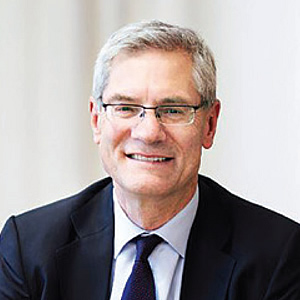 The climate challenge is a real issue that needs to be tackled now. We need to continue to develop alternative ways of transport, heating and manufacturing, in order to secure a prosperous future for our children and the generations to come. The energy sector needs to reduce its carbon footprint by finding new ways to produce energy. In electrification lies a great potential to reduce carbon dioxide emissions.
The climate challenge is a real issue that needs to be tackled now. We need to continue to develop alternative ways of transport, heating and manufacturing, in order to secure a prosperous future for our children and the generations to come. The energy sector needs to reduce its carbon footprint by finding new ways to produce energy. In electrification lies a great potential to reduce carbon dioxide emissions.
A recent study from Eurelectric shows that in order to meet the climate goals set by the Paris Agreement a major shift to electricity in transport, buildings and industry in the EU is required. The conclusions of the study are completely in line with Vattenfall's strategy and our objective to become fossil free within a generation. The key to success, as we see it, is joint efforts through partnerships.
The Eurelectric study points out that a full EU decarbonisation by 2050 would require an electrification share of 63% in transport and buildings respectively and 50 per cent electrification share in industrial processes. In 2015, direct electrification in the EU ranged between 18–32%, where the group consisting of the Nordics and Baltics had the highest share.
Key economies such as Germany grouped together with Central Europe reached 22%, while the direct electrification rate in the UK and Ireland was 21%.
At Vattenfall, we have shifted our portfolio to move towards a climate neutral energy production. Our purpose is to become fossil free within a generation. But we also recognise that we have the opportunity to contribute to lowering carbon dioxide emissions in other sectors besides energy, like the transport sector and the industry sector.
In 2015 transport stood for approximately 25% of the carbon dioxide emissions in the EU. There lies a substantial potential to reduce emissions with electric transport and we need high ambitions set by the EU to trigger the necessary paradigm shift to clean mobility across Europe.
Eurelectric's members have the necessary experience and expertise to play their part in the development of charging infrastructure. Vattenfall is currently rolling out our electrical vehicle charging network InCharge across North-western Europe. Through a collaboration with municipalities, corporations and housing cooperatives, we provide customised charging solutions in order to pave the way for more electric transport.
Heavy and long-distance transport also contributes for a large extent to CO2 emissions. Together with fuel producer Preem we are investigating a process to use hydrogen to be able to replace raw oil with residual products from the forest industry like lignin, and hence contributing to the production and use of renewable fuels.
Large parts of the buildings in the EU are heated through fossil energy supply like natural gas. We see that real estate owners are interested to look for more sustainable solutions, both from an environmental and financial point of view. This could, for instance, be an electricity-based heating system like a heat pump in combination with photovoltaics.
Vattenfall provides decentralised and integrated energy solutions to real estate owners with our InHouse concept. We are also working on storage solutions for renewable energy to be used for district heating amongst other things.
Industrial processes are still very much relying on fossil fuels. By replacing coal with hydrogen in the process of manufacturing steel, the carbon dioxide emissions connected to this process can be eliminated.
The steel production alone makes out 10% of the carbon dioxide emissions in Sweden. Through Hybrit, a partnership between the steel manufacturing company SSAB, the mining company LKAB and Vattenfall, we have started large scale research in a pilot plant to enable such a process.
Another industrial process that emits large amounts of carbon dioxide is the manufacturing of cement, which is produced through the heating of limestone. Using electricity in this process would contribute to a reduction of the Swedish carbon dioxide emissions by 5%. Vattenfall, together with Cementa (Heidelberg Cement Group), strive to realise this process through the joint project CemZero.
These examples show that there is a concrete and great potential for electrification in order to reduce carbon dioxide emissions. The precondition is access to fossil free electricity at a competitive price. This will require efforts from governments, authorities, universities and other research centres.
For Vattenfall, it is about being a partner in this important transition, whether it is for the manufacturing of fossil free steel, sustainable cement or in smart solutions for storage of solar energy and charging of electric vehicles.
I hereby would like to invite other companies and organisations to more partnerships in order to reach our common climate targets for 2050. I am convinced there are many more potential projects out there that can be achieved through joint efforts.
Contact information
Ioana PETCU, Advisor,
Press & Media Relations Eurelectric aisbl,
Boulevard de l'Impératrice, 66, 1000 Brussels, Belgium
Tel: +32 470 45 35 89
Email: ipetcu@eurelectric.org